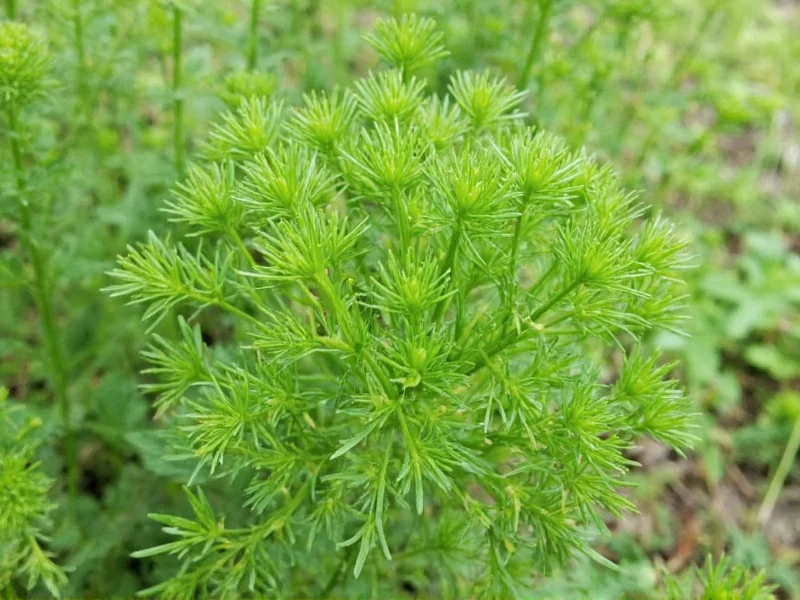Many home cooks and gardeners confuse fennel and dill due to their similar feathery foliage and yellow flower clusters. While these herbs share some visual characteristics, they have distinct botanical classifications, flavor profiles, and culinary applications that make them unique ingredients in the kitchen.
Botanical Relationship and Differences
Both fennel and dill belong to the Apiaceae family, which explains their visual similarities, but they are different species with unique characteristics. Fennel (Foeniculum vulgare) is a hardy perennial that develops a distinctive bulb at its base, while dill (Anethum graveolens) is an annual herb that grows tall with delicate, fern-like leaves but no bulb formation.
The confusion between fennel vs dill often arises when examining their mature plants, as both produce similar-looking yellow umbel flowers and feathery fronds. However, a closer inspection reveals key differences in their growth habits and physical structures that help distinguish fennel from dill.
| Characteristic | Fennel | Dill |
|---|---|---|
| Botanical Name | Foeniculum vulgare | Anethum graveolens |
| Plant Type | Perennial | Annual |
| Bulb Formation | Yes, distinctive bulbous base | No bulb |
| Primary Flavor | Sweet anise/licorice | Grassy, citrusy, dill pickle flavor |
| Seed Shape | Oval, slightly curved | Flattened oval |
| Height at Maturity | 4-6 feet | 2-4 feet |
Visual Identification: How to Tell Fennel from Dill
When trying to determine if a plant is fennel or dill, examine these key features:
- Base structure: Fennel develops a prominent, rounded bulb at the base that's edible, while dill grows directly from the ground without any bulb formation
- Stem color: Fennel stems are often green with purple streaks, while dill stems are typically solid green
- Leaf texture: Fennel leaves are slightly thicker and more rigid, while dill leaves are more delicate and feathery
- Seed characteristics: Fennel seeds are larger (4-8mm), oval-shaped with five longitudinal ridges, while dill seeds are smaller (3-5mm), flatter, and have a distinctive curved shape
Flavor Profiles and Culinary Applications
The difference between fennel and dill becomes most apparent when tasting them. Fennel offers a pronounced sweet licorice flavor throughout the plant—bulb, stalks, leaves, and seeds—while dill has a more subtle, grassy taste with citrus notes, strongest in the leaves and seeds.
Chefs and home cooks should understand when to use fennel versus dill, as they're not direct substitutes. Fennel bulb works well roasted, grilled, or raw in salads, while fennel seeds are essential in Italian sausage and Indian spice blends. Dill weed shines in pickling, with fish dishes, and in creamy sauces, while dill seeds feature prominently in pickling recipes and some breads.
Can You Substitute Dill for Fennel (and Vice Versa)?
While many search for whether dill can replace fennel in recipes, the substitution isn't straightforward due to their distinct flavor profiles. In some cases:
- Fennel seeds can be partially substituted with a combination of dill seeds and a tiny pinch of anise seed, but the flavor won't be identical
- Fennel fronds have no perfect substitute, though fresh dill with a touch of tarragon might work in some applications
- Fennel bulb has no adequate substitute—its unique texture and mild anise flavor are irreplaceable
Understanding the proper substitution for fennel versus dill can make or break a dish, especially in traditional recipes where the specific flavor profile matters.
Growing Conditions and Garden Management
Gardeners often wonder why their fennel plant looks like dill, especially in the early growth stages. While both prefer full sun and well-drained soil, they have different growing requirements:
- Fennel is a perennial in zones 6-10 and can grow quite large (4-6 feet tall), potentially crowding other plants
- Dill is an annual that typically reaches 2-4 feet in height and readily self-seeds
- Fennel requires more space between plants (18-24 inches) compared to dill (12-18 inches)
- Crucially, fennel and dill can cross-pollinate, creating hybrid plants with unpredictable characteristics—keep them separated by at least 1,000 feet if saving seeds
Common Points of Confusion
The confusion between fennel and dill stems from several factors:
- Both produce similar yellow flower clusters that attract beneficial insects
- Their feathery foliage looks nearly identical to untrained eyes
- Both are commonly used in fish dishes, leading to interchangeable references
- Some regional names overlap or get misapplied
- Fennel fronds are sometimes called "dill-like" in descriptions
When identifying fresh herbs at the grocery store, look for the bulbous base to confirm it's fennel. Without that distinctive bulb, you're likely looking at dill or another similar herb like caraway or cumin (which are also different plants).
Practical Tips for Home Cooks and Gardeners
Here's how to confidently work with both herbs:
- When buying fresh, fennel will always have the bulb attached unless specifically sold as "fennel fronds"
- Store fennel bulb wrapped in a damp paper towel in the refrigerator; dill lasts longer when placed stem-down in water
- Freeze dill weed in ice cube trays with water or oil; fennel bulb doesn't freeze well but seeds do
- When growing, plant fennel away from dill to prevent cross-pollination that affects flavor
- Remember that "dill weed" refers to the fresh leaves, while "dill seed" comes from the mature plant
Conclusion
Understanding the difference between fennel and dill enhances both your gardening success and culinary results. While these herbs share a family resemblance, their distinct characteristics make each valuable in specific applications. By learning to identify fennel versus dill and understanding their unique flavor profiles, you'll make more informed choices when cooking or gardening. Remember that fennel's bulbous base is the most reliable visual differentiator, while their flavor profiles—sweet anise for fennel versus grassy citrus for dill—dictate their best culinary uses. Whether you're trying to identify fresh herbs at the market or deciding which to plant in your garden, recognizing these differences will lead to better outcomes in your kitchen and garden.











 浙公网安备
33010002000092号
浙公网安备
33010002000092号 浙B2-20120091-4
浙B2-20120091-4